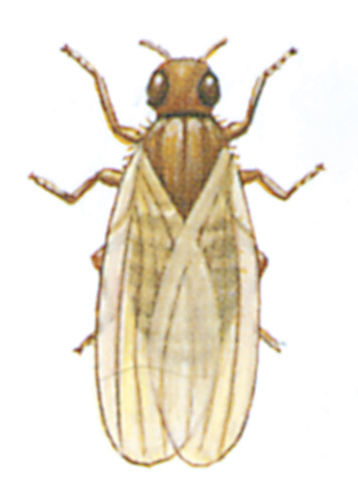
Latin: Drosophila funebris
These small yellowish-brown flies can sometimes be seen when a peeled banana or a cut tomato is left on the kitchen table. Vinegar flies frequently settle on bottles with drops of wine, milk or beer on the outside and they also visit jams, ketchup and vinegar.
The female lays eggs directly in such substrates and these hatch after about a day into larvae which move down into the food. They are fully grown after 4-5 days and then pupate.
The flies which emerge from the pupae can start to lay eggs when they are 24 hours old, so when the conditions are suit- able the whole life cycle can be completed in 10 days.
In everyday life these small flies can be annoying and for factories making jam or cooking fruit and vegetables they may become a serious economic problem. As a precaution all such foods should be adequately covered to prevent the flies laying eggs on them.
For many years, species of Drosophila, variously known as fruit flies or vinegar flies, have been widely used as experimental animals in biological laboratories, and have been particularly useful in research on genetics.




